Old Timey Kitchen Advice—Worth Resurrecting!
Aunt Annie was a collector, and she kept a lot of old little kitchen-how-to booklets in amongst her recipe books. Lucky me inherited these—they’re true treasure troves of information. And I’ve been reading them with YOU in mind.
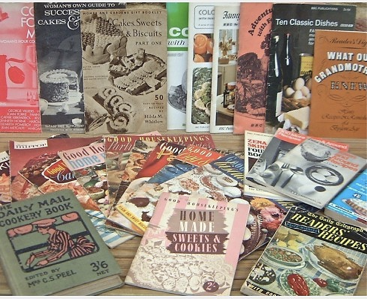
I recently ran onto some really useful information that maybe you aren’t aware of. There were a few things I’ve always wondered about that were addressed. Way back when, people didn’t wonder, they knew how to do these basic things. For instance:
Ever wonder how to stuff cabbage leaves without cracking or tearing them? Wonder no more. To reduce breakage or tearing, it is best to soften cabbage leaves before stuffing them. To do this, you carefully remove the core of the cabbage and place the head in a large saucepot of nearly boiling water for about three minutes.
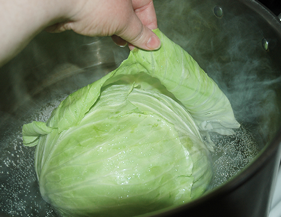
Then remove the cabbage head from the water and allow it to cool a minute or two. Carefully peel away the outer layers of softened leaves. If the inside layers have not softened adequately, return the remainder of the cabbage head to the pot and reheat the water until it almost boils.
Repeat the peeling step until you have the amount of cabbage leaves you need. Now put this technique to work when you want to make your favorite stuffed cabbage roll recipe.
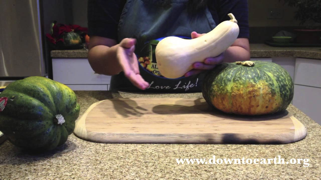
A nd here’s another food prep issue with which I’ve struggled: Ever wonder how to remove the tough rind of winter squash without breaking your wrist or your knife? Wonder no more. One of the characteristics of a ripe winter squash (acorn, butternut, etc.) is its firm rind, which is often annoyingly hard to remove.
To soften the rind, place the whole squash in the microwave oven and cook it on high for 1 ½ to 2 ½ minutes (depending on the size of the squash). Allow the squash to stand and cool for at least two minutes before attempting to remove the rind.
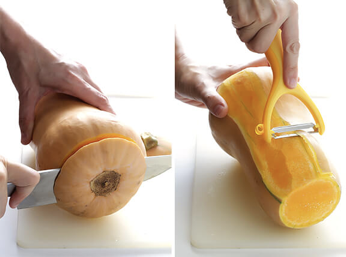
When the squash is cool enough to handle, first slice a little off its top and bottom. This will create a “foot” or stable base and give you more leverage for the rest of the work (you don’t want your squash wobbling around as you’re attempting to peel it). Then carefully begin cutting the rind away. The directions in one of these booklets says you should even be able to remove this softened rind with a vegetable peeler (much safer than a sharp paring knife).
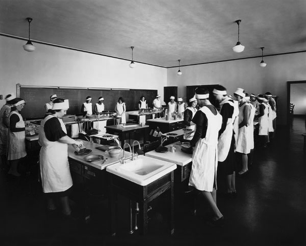
There’s a lot to be said for old-timey advice. They’re usually full of common sense. I’ll close with a perfect example found in Aunt Annie’s 1929 Home Economics book: Food Study. Besides containing loads of very good, basic recipes, it gives the “Rules for Working:”
- Before beginning any kitchen work, put on a clean apron and wash your hands
- Before beginning to prepare food, read over the recipe carefully to see what utensils are needed. Keep all utensils on a utility tray.
- Save work by saving dishes; measure dry ingredients first, liquids second, and fats last. You can use the same cup or spoon for all using this procedure.
- Be economical in the use of gas or electricity. Do not light gas until needed and turn it out before removing utensils from the stove.
- When washing dishes, follow this order, which facilitates clean dish water the longest: glasses; silver; china; small cooking utensils; and then sauce pans, kettles, skillets, and so on.
- Work quickly, quietly, and carefully.
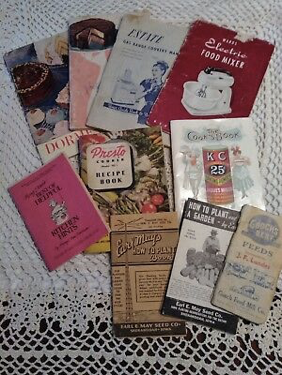
If you’re fortunate enough to already own or find a few of these vintage kitchen how-to booklets, value and use them. We live in a day where much of this old-timey good sense has been lost, and it’s worth resurrecting!
- www.thevintagekitchenstore.com
- www.thecookinggeek.com
- www.youtube.com
- www.gimmesomeoven.com
- www.en.wikipedia.org
- www.picclick.com
 Alice Osborne
Alice Osborne
Weekly Newsletter Contributor since 2006
Email the author! alice@dvo.com
